Abstract
The identification in February 1976 of a new strain of influenza virus led to the enactment of unprecedented federal legislation to minimize the impact of a potential outbreak of pandemic influenza in the fall and winter of 1976-1977. This legislative program does not, however, represent a commitment of federal resources to deal with the more general, longstanding problem of epidemic influenza. This paper presents a series of estimates of the impact and economic consequences of influenza. By including periods of interpandemic as well as pandemic disease, the estimates offer a broadened perspective of the magnitude of the influenza problem. The estimates show that while the proportions of pandemic influenza can be singularly impressive, the cumulative effects of interpandemic outbreaks are generally of greater consequence. The paper discusses the implications of these estimates and the 1976 legislation for the support and implementation of federal policy on the use of influenza vaccine. While the commitment of resources in support of public policy cannot alone guarantee successful implementation, it must be considered an essential prerequisite for dealing with both interpandemic and pandemic influenza.
Full text
PDF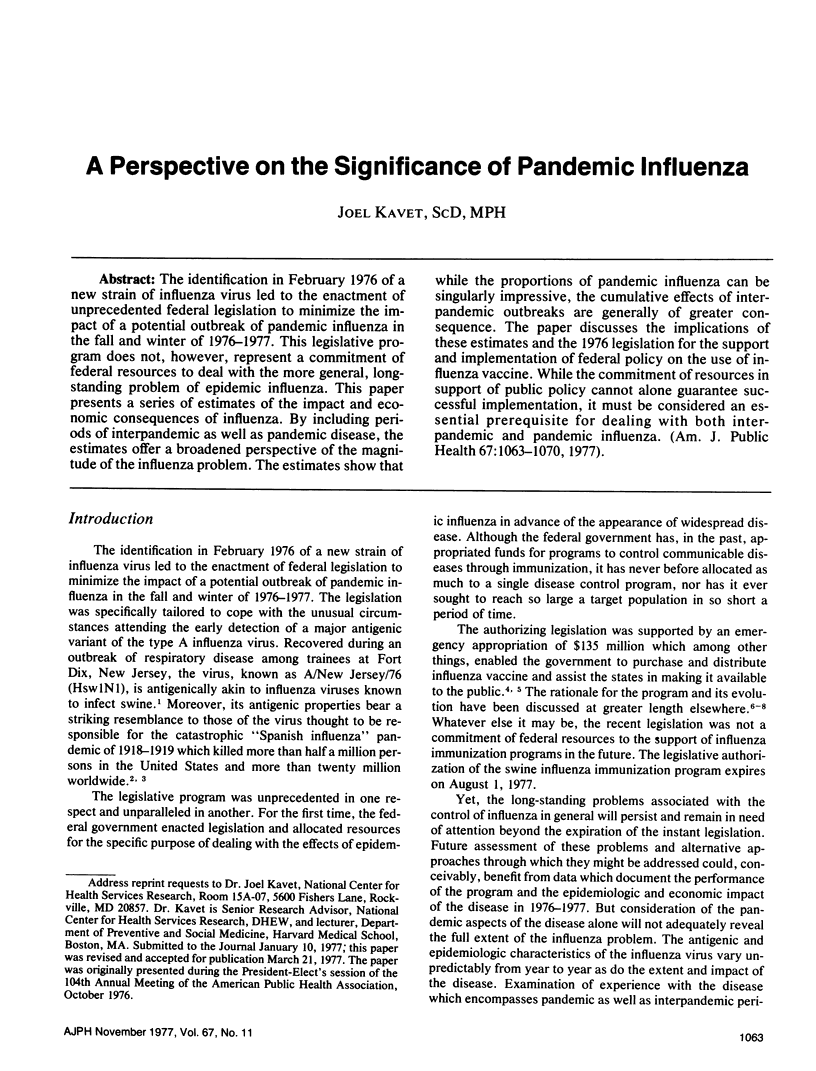
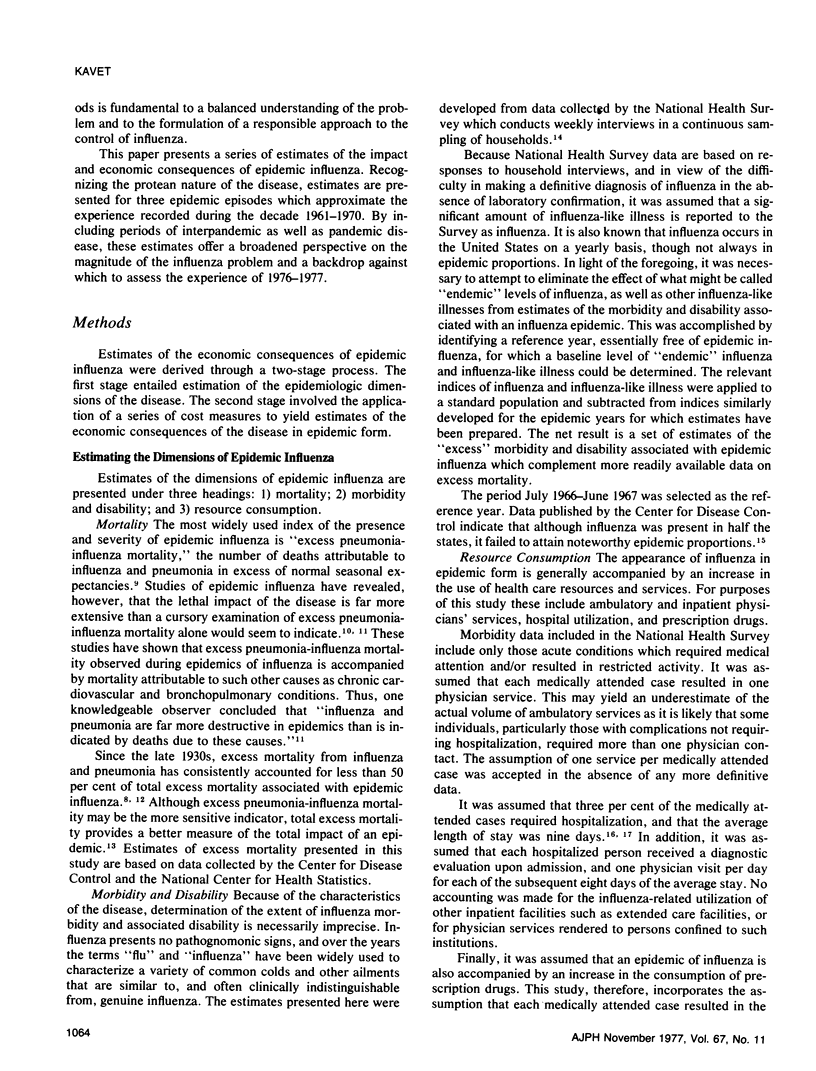
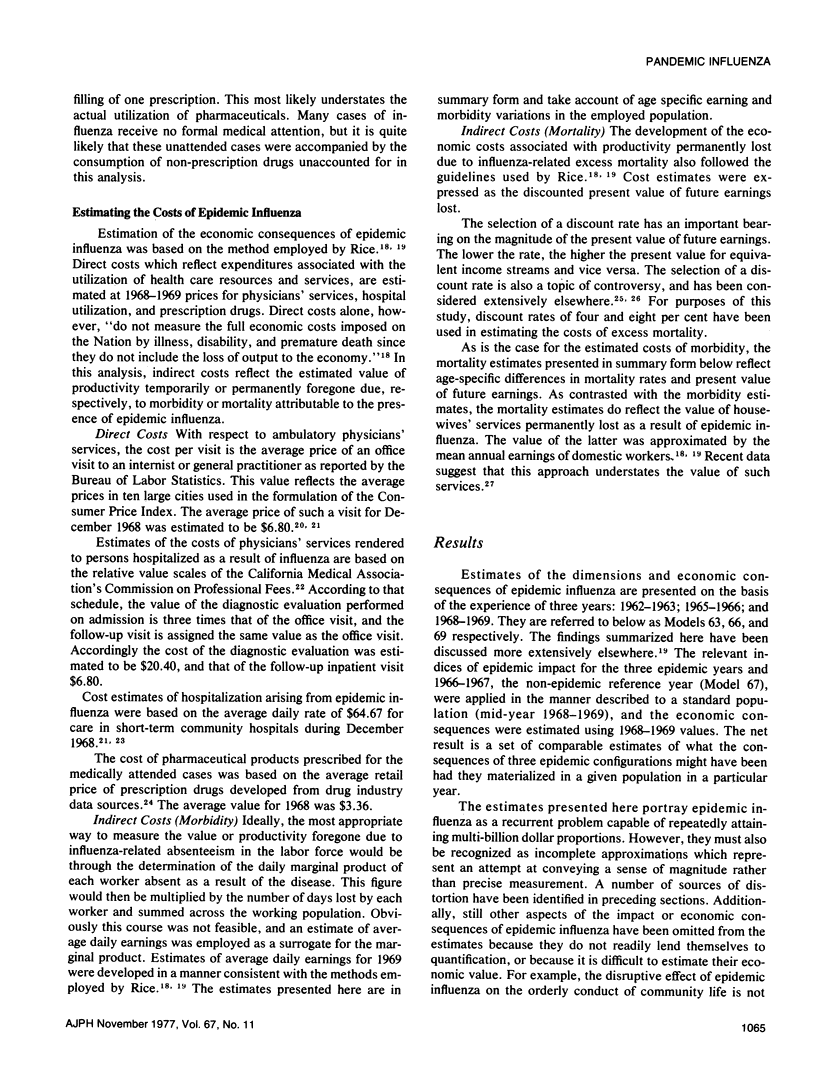
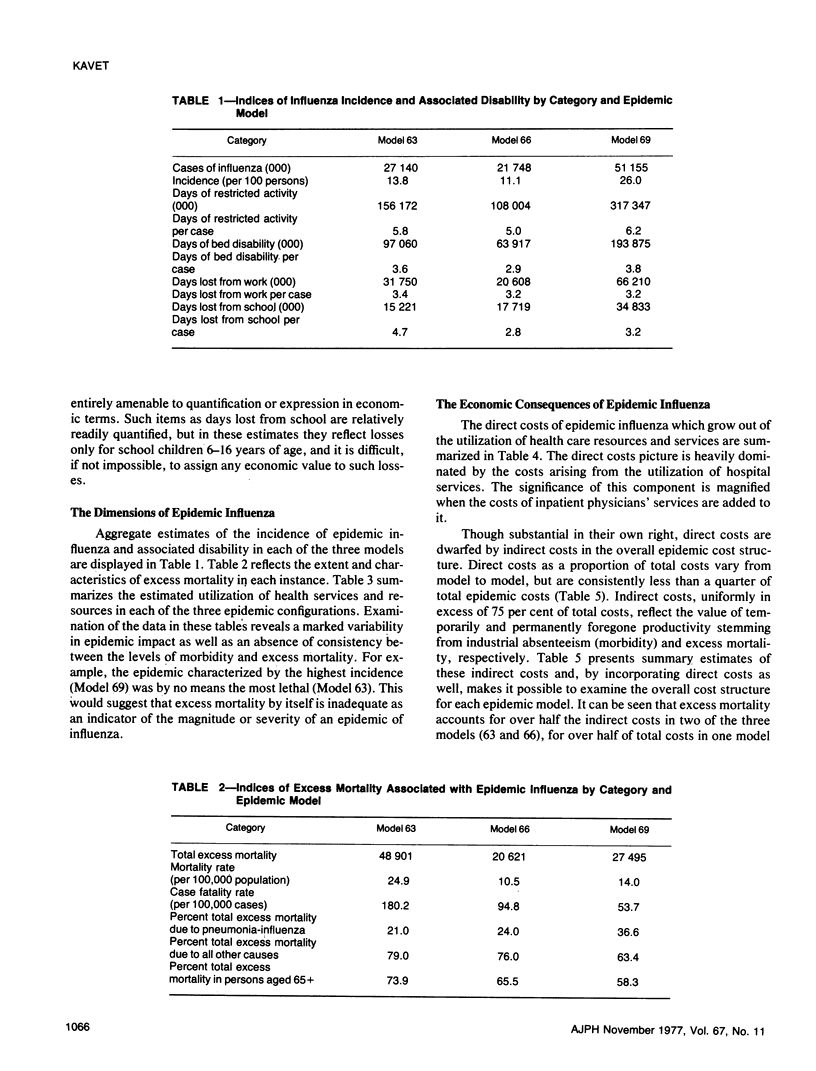
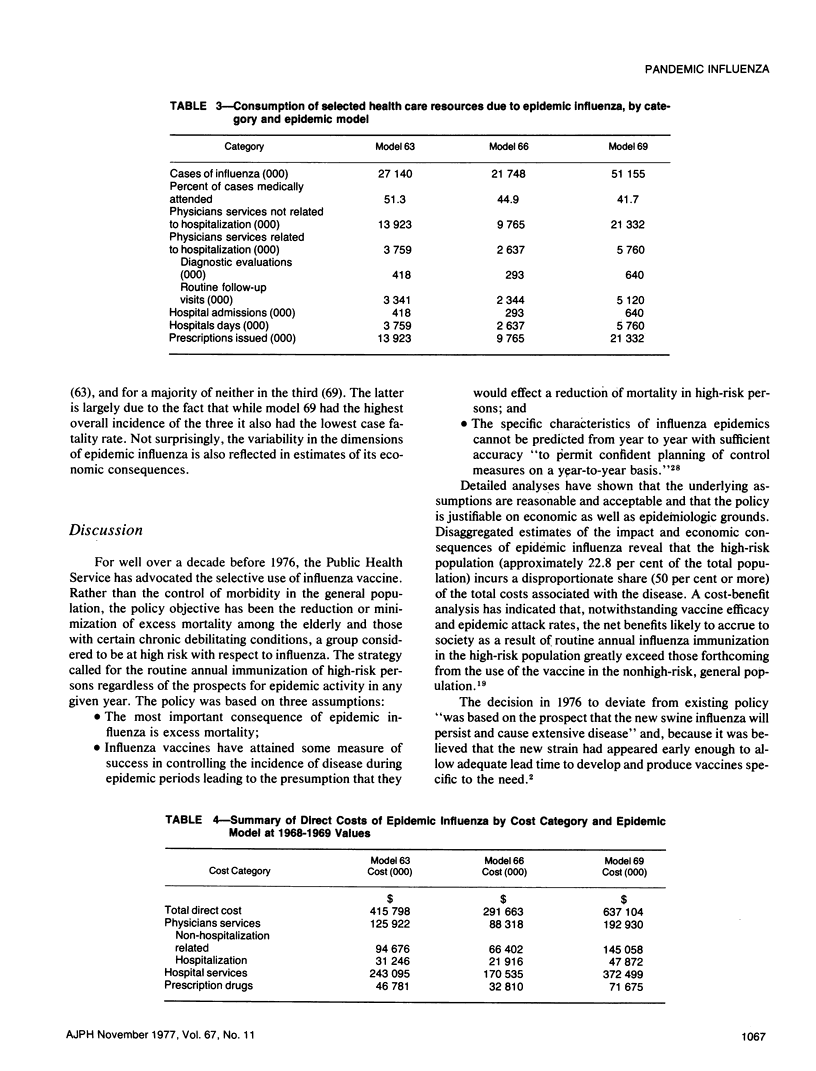
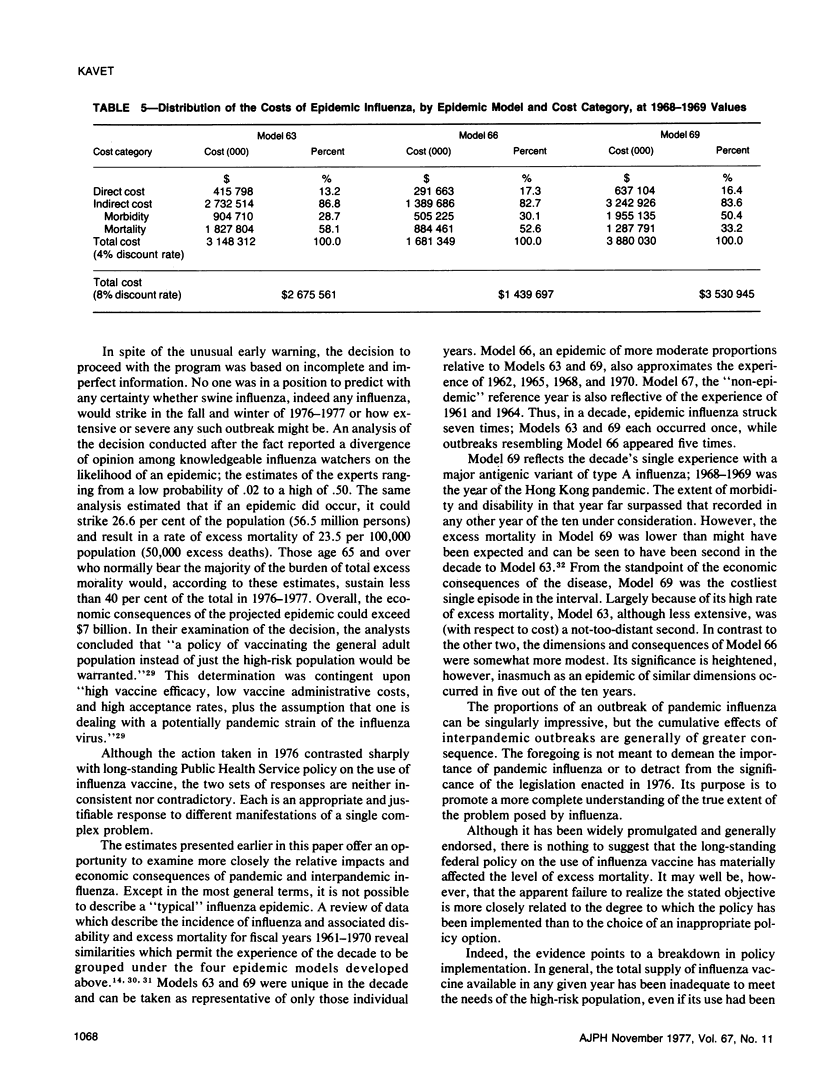
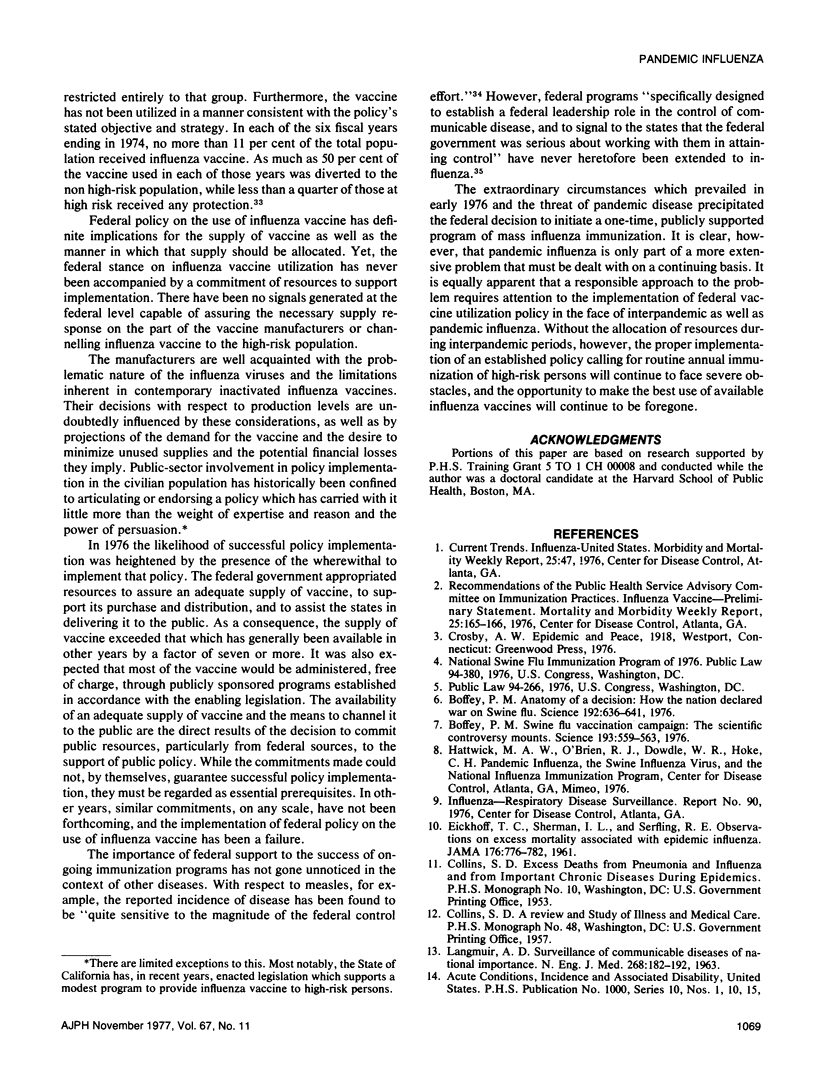
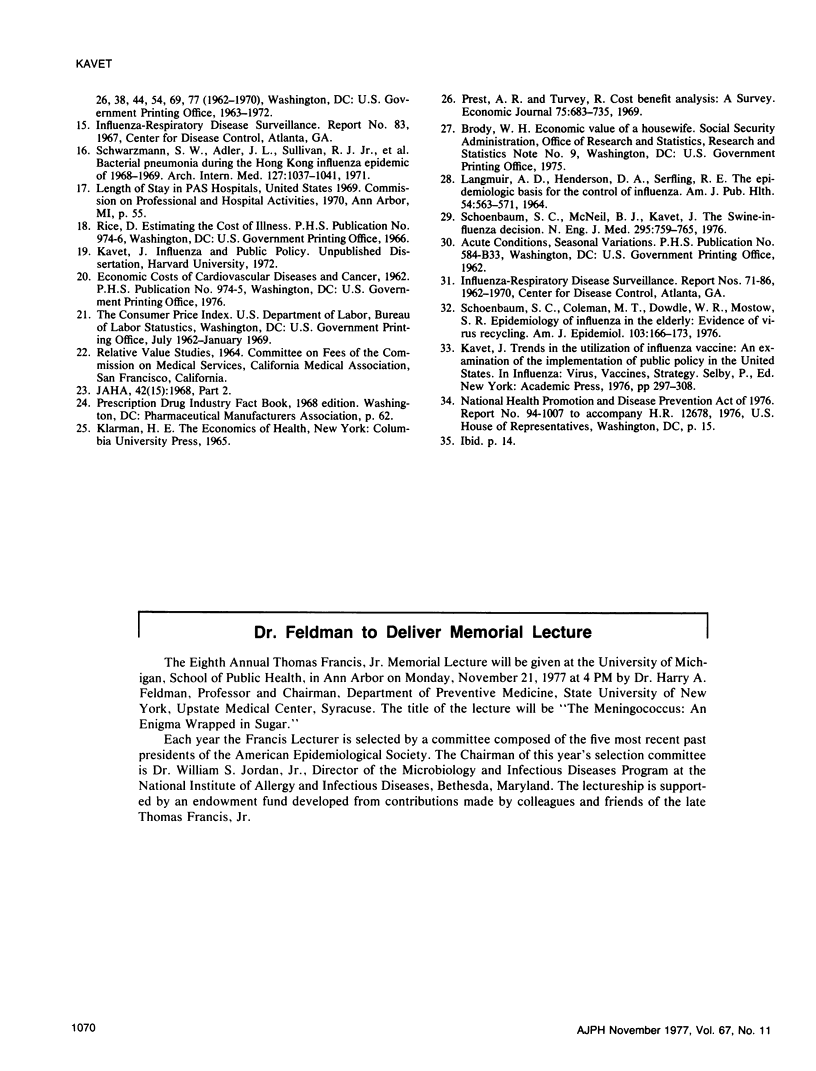
Selected References
These references are in PubMed. This may not be the complete list of references from this article.
- Boffey P. M. Anatomy of a decision: how the nation declared war on Swine flu. Science. 1976 May 14;192(4240):636–641. doi: 10.1126/science.192.4240.636. [DOI] [PubMed] [Google Scholar]
- Boffey P. M. Swine flu vaccination campaign: the scientific controversy mounts. Science. 1976 Aug 13;193(4253):559–563. doi: 10.1126/science.193.4253.559. [DOI] [PubMed] [Google Scholar]
- EICKHOFF T. C., SHERMAN I. L., SERFLING R. E. Observations on excess mortality associated with epidemic influenza. JAMA. 1961 Jun 3;176:776–782. doi: 10.1001/jama.1961.03040220024005. [DOI] [PubMed] [Google Scholar]
- LANGMUIR A. D., HENDERSON D. A., SERFLING R. E. THE EPIDEMIOLOGICAL BASIS FOR THE CONTROL OF INFLUENZA. Am J Public Health Nations Health. 1964 Apr;54:563–571. doi: 10.2105/ajph.54.4.563. [DOI] [PMC free article] [PubMed] [Google Scholar]
- LANGMUIR A. D. The surveillance of communicable diseases of national importance. N Engl J Med. 1963 Jan 24;268:182–192. doi: 10.1056/NEJM196301242680405. [DOI] [PubMed] [Google Scholar]
- Schoenbaum S. C., Coleman M. T., Dowdle W. R., Mostow S. R. Epidemiology of influenza in the elderly: evidence of virus recycling. Am J Epidemiol. 1976 Feb;103(2):166–173. doi: 10.1093/oxfordjournals.aje.a112214. [DOI] [PubMed] [Google Scholar]
- Schoenbaum S. C., McNeil B. J., Kavet J. The swine-influenza decision. N Engl J Med. 1976 Sep 30;295(14):759–765. doi: 10.1056/NEJM197609302951405. [DOI] [PubMed] [Google Scholar]
- Schwarzmann S. W., Adler J. L., Sullivan R. J., Jr, Marine W. M. Bacterial pneumonia during the Hong Kong influenza epidemic of 1968-1969. Arch Intern Med. 1971 Jun;127(6):1037–1041. [PubMed] [Google Scholar]


